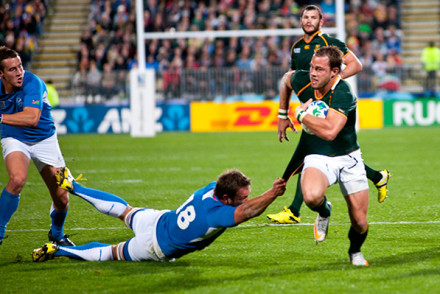This annual food fight in Ivrea, Italy, is a recreation of events that took place during the 12th century, when the local ruling tyrant tried to exercise his feudal right to deflower the miller’s daughter, Violetta, on her wedding night. She promptly lopped off his head, which ultimately led to a chain of events culminating in the independence of the city.
Upon hearing of his demise, the villagers stormed, stoned and razed the palace to the ground, claiming freedom from this tyrannical leader and his kin.
Since then the revolt has been recreated every year with several adjustments. A young child is elected to play the role of Violetta and instead of having to defend her chastity; she gets to ride around in parades amid much cheering.
The palace has been replaced with highly decorated horses and carriages and the stones have been replaced with oranges. Initially, beans were thrown, then apples. No oranges grow near Ivrea, so every year 2.5 tons of the fruit, usually the leftovers of the winter crop, are imported from Sicily especially for the battle.
The carnival takes place in February on the days preceding Fat Tuesday, ending in a rousing speech made by the elected carnival ‘general’, and concluded with the words, “we’ll see each other on Thursday at one”. He is referring to the Thursday proceeding lent of the following year, which is when the preparations for the next battle of the oranges will commence.
On this day, in preparation for the epic battle to commence on the Sunday, the townsfolk divide themselves into teams of orange flinging ‘Aranceri’ and those who will represent the enemy, a.k.a. the targets, riding in the carts.
About 3000 townsfolk usually participate and if you would like to join in, there are a few precautions that you should take to avoid grievous bodily harm:
- Either stay out of range behind the protective netting, or
- Purchase and wear the traditional red helmet provided for protection (and to signify that you are one of the good guys) and fire away.



